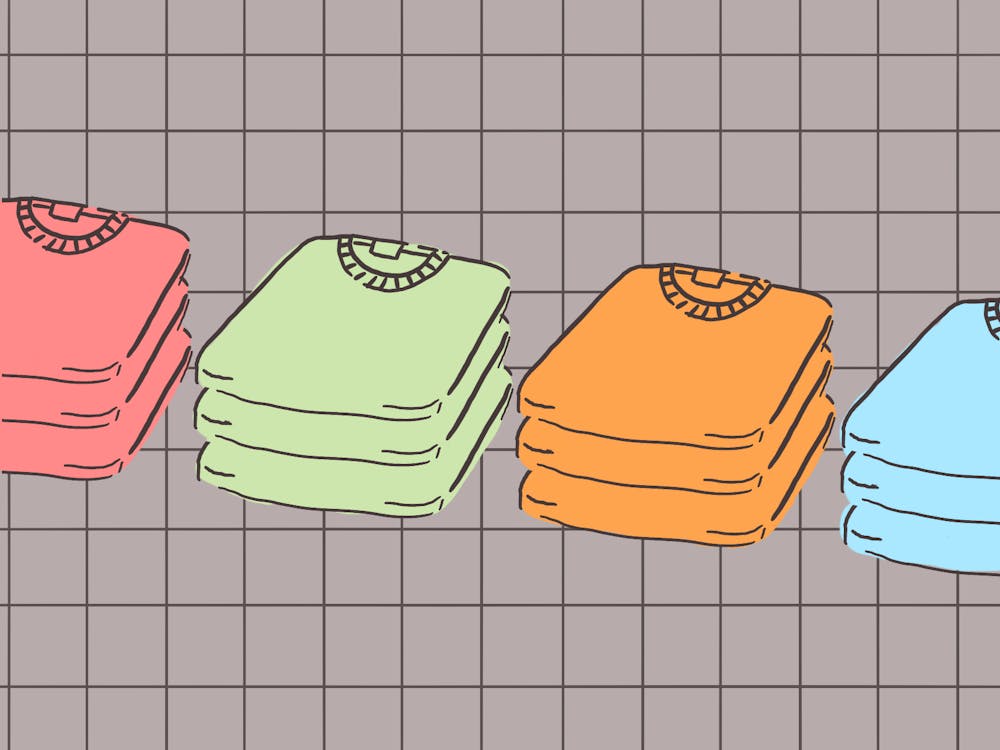As a regular viewer of fashion content on social media, chances are that you've seen a SHEIN haul pop up on your feed once or twice. In the comments, you’ll undoubtedly encounter a barrage of criticism: SHEIN exploits its workers!, you’re destroying the planet!, stop supporting fast fashion!—the list goes on.
These commenters aren’t wrong, per se, and they reflect a growing movement to boycott the fast fashion industry. SHEIN, like many other fast fashion retailers, has faced its fair share of controversy. Behind its trendy clothing items and irresistibly low prices lies a history of environmentally unfriendly practices and an alleged use of unethical labor practices typical of this trade.
But fast fashion’s affordability isn’t something that every consumer can opt out of. If you come from a low–income family living paycheck to paycheck, or are just a college student struggling to balance tuition fees with personal expenses, you may not have change to spare for a nearly 50% markup for sustainable goods.
In many ways, it makes sense that ethically–produced and eco–friendly products cost more money. They’re often composed of higher–quality materials, produced by workers who are paid a fair wage, and made without employing classic fast–fashion shortcuts that produce excess environmental waste. But for people who are lacking in disposable income, as well as for those whose sizes aren’t carried by these brands, the moral argument for buying sustainable isn’t all that compelling.
Shopping secondhand seems like an obvious solution. It's usually cheaper than buying new, and it prevents perfectly wearable items from going to landfill. According to a recent report by thredUP, in 2019 the resale portion of the clothing market grew at 25 times the rate that traditional retail did, a phenomenon primarily driven by young people–aka Gen Z and Millennials–who took up thrifting out of concern for the environment.
But with rising popularity comes higher prices: thrift and consignment shops have steadily raised their prices as more and more affluent consumers join their customer base.
Secondhand shopping magnate Goodwill updated its pricing guidelines this year, announcing that the chain will now offer a range of prices for different categories of items rather than selling them at a flat rate. The introduction of new pricing guidelines like these reflects the willingness of a new batch of middle–class customers to pay higher prices. But for low–income customers, this means that one of their last sustainable shopping options is growing increasingly out of reach.
So–called vintage resellers also tend to scoop up the trendiest merchandise from thrift stores to sell at a marked–up price on apps like Poshmark and Depop, leaving only pilled sweaters and pit–stained t–shirts behind. When resellers both inflate prices on third party platforms and deplete the already limited supply of fashionable and plus–size secondhand clothing in thrift stores, they create the same cost and size inaccessibility issues that people raise with new sustainable brands.
So why are we so quick to shame people whose situations we don’t know for buying fast fashion brands? On the most basic level, it makes us feel good about ourselves. Calling out others is an assertion of our own moral superiority and is a way for us to convince someone to change their shopping habits.
If fast fashion retailers are destroying the planet, then shaming everyone into boycotting them solves the problem, right?
Not so much. As much as we might like to believe that buying an old lady’s sweater at Goodwill and calling it vintage chic can save the planet, the ultimate responsibility lies with the big businesses making the clothes.
According to the Carbon Majors Report, 71% of global emissions come from only 100 companies–a staggering, and frankly discouraging, statistic for anyone attempting a sustainable life. And while consumers do hold a great deal of power to demand changes from major corporations, policing what other people wear isn’t the solution.
Does this mean individual changes don’t matter? Not at all. We should all be doing what we can to minimize our environmental impact. But the key word here is can. Not everyone can afford to shop at Reformation and Patagonia, or spend hours sifting through old Abercrombie & Fitch shirts at a thrift store hoping to find something in their size.
It’s not our job to go around shaming other people for their choices when systemic factors are depleting the few options that people have left to consume affordable, sustainable, and inclusive fashion. Instead, let’s direct our energy towards the real culprits— the big corporations that are polluting our planet and governments that let them operate unregulated.
Organizations like Fashion Revolution, which has dedicated itself to pushing the global fashion industry to prioritize people and the environment over profits, has outlined a number of ways for people to get involved in the sustainable fashion movement on their website. Some of their suggestions include furthering the cause on social media by using hashtags #whomademyclothes and starting email campaigns to pressure companies to answer for their use of unjust labor practices.
They also recommend contacting elected officials to express support for legislation that addresses environmental and ethical concerns in the fashion industry. After all, lawmakers are the ones who can raise the minimum wage, regulate companies’ abilities to pollute, and mandate better working conditions.
Ultimately, our most powerful tool in addressing the shortcomings of the fast fashion industry is our voices. When enough people put pressure on a company or government, they will be forced to respond. And although it won’t solve the problem immediately, it’s a much more effective use of our time than blaming each other for problems that are bigger than any one person.

